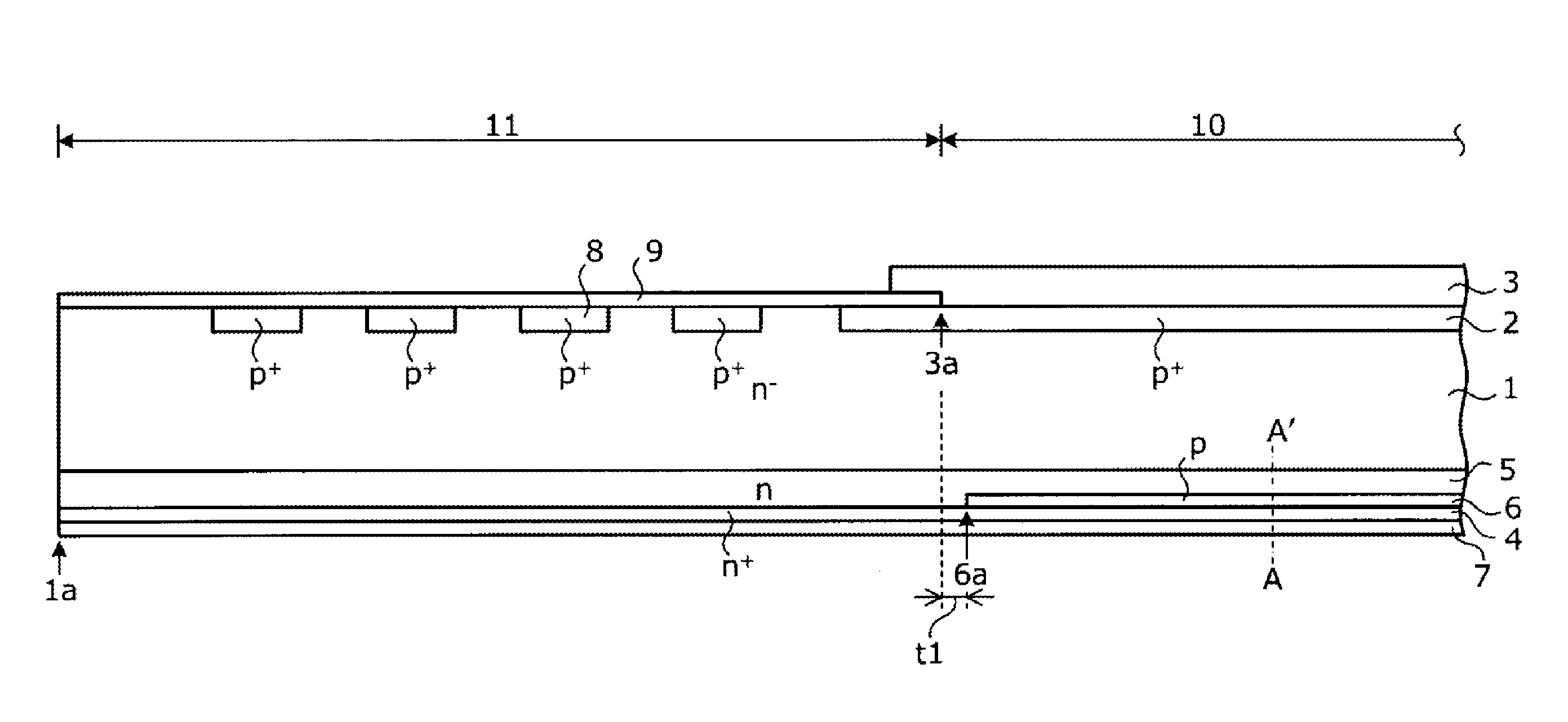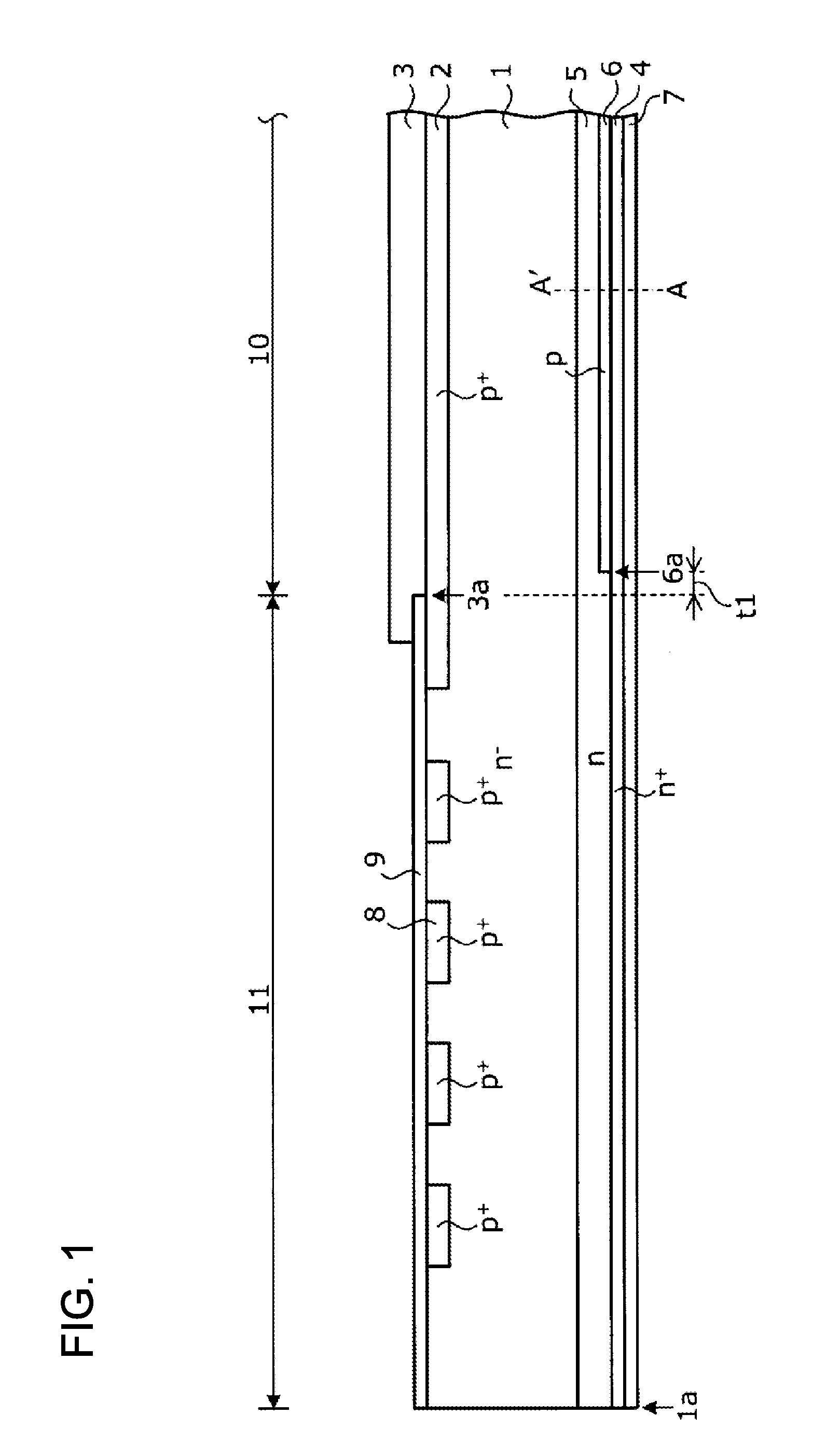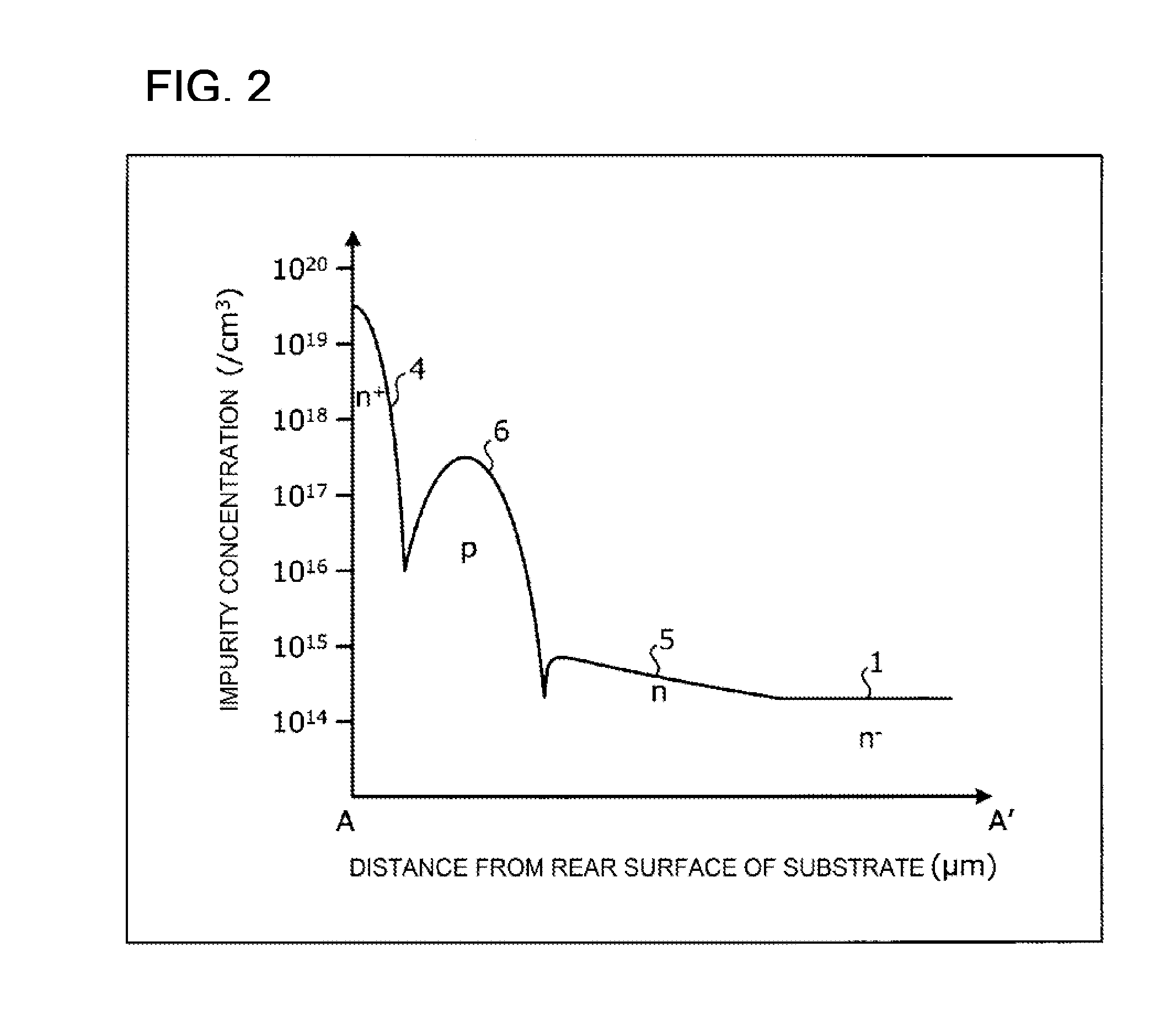Semiconductor device
- Summary
- Abstract
- Description
- Claims
- Application Information
AI Technical Summary
Benefits of technology
Problems solved by technology
Method used
Image
Examples
embodiment 1
[0063]The structure of a semiconductor device according to Embodiment 1 will be described. FIG. 1 is a cross-sectional view illustrating the structure of the semiconductor device according to Embodiment 1. FIG. 2 is a characteristic diagram illustrating an impurity concentration distribution along the cutting line A-A′ of FIG. 1. In FIG. 2, the horizontal axis indicates the distance from the rear surface of a substrate (an interface between an n+ cathode layer 4 and a cathode electrode 7) in the depth direction of the substrate and the vertical axis indicates impurity concentration along the cutting line A-A′ which traverses a rear-surface-side region of the substrate in the depth direction (which holds for FIGS. 9 and 13. As illustrated in FIG. 1, the semiconductor device according to Embodiment 1 includes an active region 10 and an edge termination structure portion (edge portion) 11 that surrounds the active region 10, which are provided in an n− semiconductor substrate that will...
embodiment 2
[0089]Next, a semiconductor device manufacturing method according to Embodiment 2 will be described. FIG. 6 is a flowchart illustrating the outline of the semiconductor device manufacturing method according to Embodiment 2. The semiconductor device manufacturing method according to Embodiment 2 differs from the semiconductor device manufacturing method according to Embodiment 1 in that, after electron beams are radiated to control the lifetime, an n+ cathode layer 4 is formed and laser annealing is performed to activate the n+ cathode layer 4.
[0090]Specifically, first, similarly to Embodiment 1, a process from the formation of a front surface element structure to the formation of a buried p layer 6 is performed (Steps S11 to S14). Then, after a resist mask used to form the buried p layer 6 is removed, impurities which are implanted by an ion implantation process for forming an n buffer layer 5 and an ion implantation process for forming the buried p layer 6 are thermally diffused by...
embodiment 3
[0092]Next, a semiconductor device manufacturing method according to Embodiment 3 will be described. FIG. 7 is a flowchart illustrating the outline of the semiconductor device manufacturing method according to Embodiment 3. The semiconductor device manufacturing method according to Embodiment 3 differs from the semiconductor device manufacturing method according to Embodiment 2 in that an anode electrode 3 is formed on the front surface of an n− semiconductor substrate before the rear surface of the n− semiconductor substrate is ground to reduce the thickness of the n− semiconductor substrate.
[0093]Specifically, first, a front surface element structure is formed on the front surface of the n− semiconductor substrate which will be an n− drift region 1 (Step S31) and the anode electrode 3 is formed (Step S32). A method for forming the front surface element structure and a method for forming the anode electrode 3 are the same as those in Embodiment 1. Then, similarly to Embodiment 2, a...
PUM
 Login to View More
Login to View More Abstract
Description
Claims
Application Information
 Login to View More
Login to View More - Generate Ideas
- Intellectual Property
- Life Sciences
- Materials
- Tech Scout
- Unparalleled Data Quality
- Higher Quality Content
- 60% Fewer Hallucinations
Browse by: Latest US Patents, China's latest patents, Technical Efficacy Thesaurus, Application Domain, Technology Topic, Popular Technical Reports.
© 2025 PatSnap. All rights reserved.Legal|Privacy policy|Modern Slavery Act Transparency Statement|Sitemap|About US| Contact US: help@patsnap.com



